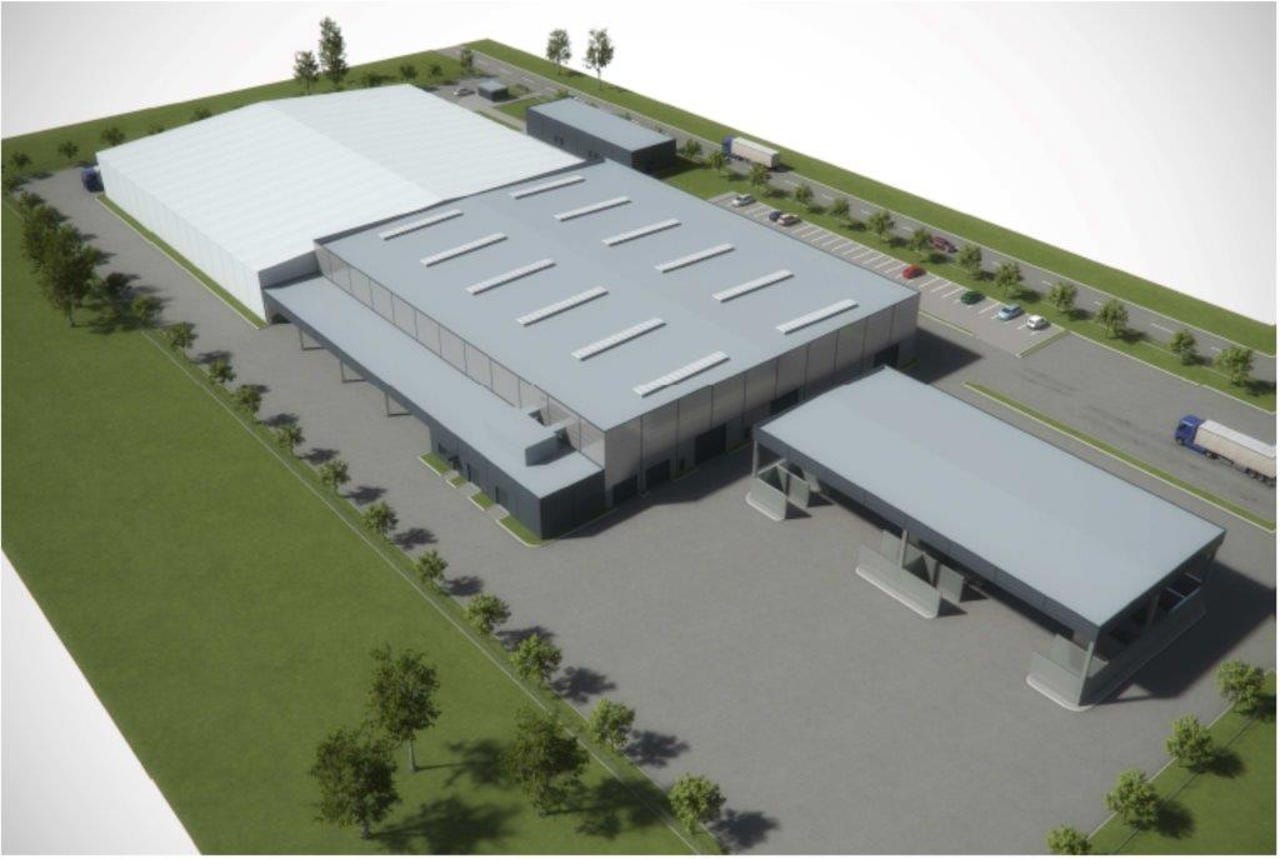Mitsubishi Materials: Bring us your e-waste for recycling, we don't mind what it is

An artist's impression of the Mitsubishi Materials e-waste recycling plant in Moerdijk, the Netherlands, which should be operational in 2017.
Several technology companies, such as IBM, have e-waste programs exclusive to their brands or for certain products. But Mitsubishi Materials of Japan wants to take on all e-waste from the entire European geographical region, despite the difficulties and cost of recycling such hardware.
As part of a joint venture with Japanese metals-to-batteries trading company Hanwa, Mitsubishi Materials is building an e-waste recycling hub in the port town of Moerdijk in the Netherlands. It's located near Europe's busiest shipping port, Rotterdam.
The €30.8m ($34.3m) plant will be equipped to receive e-waste from all over Europe, and salvageable parts, or e-scrap, will be sent to Mitsubishi Materials for further analysis and processing. While the e-waste installation is currently under construction, it will be operational in 2017.
E-waste comprises any electronic device that a consumer discards, such as desktop computers, laptops, television sets, and mobile phones. Many of these devices can contain environmentally hazardous materials, such as cadmium, lead, and mercury. When these unsafe materials are not disposed of properly, they can harm nearby communities.
Mitsubishi Materials says that it will typically collect and process printed circuit boards to recover precious metals, including copper, gold, silver, platinum, and palladium. The company does not say how it will discard the remaining materials. But it says it chose Europe as the location for its e-waste recycling hub because Europe is one of the largest sources of e-scrap, such as printed circuit boards, in the world.
Any country within the European geographical region with reasonable access to Moerdijk is invited to ship its e-waste and e-scrap material to the hub.
This graphic shows Mitsubishi Materials' proposed flow of materials from the new e-waste plant.
"Increasingly, it's becoming more of a requirement for manufacturing companies to take these responsibilities seriously," says Lenny Koh, director of the Advanced Resource Efficiency Centre at the University of Sheffield.
Companies can minimize the amount of hazardous materials in their products at the beginning of the design process, before the product reaches consumers.
"But it's only up to a certain degree that that sort of environmental design can be achieved. We'll need to recycle those products," says Koh.
Around 30 to 50 million tons of e-waste are thrown out around the world each year, with growth increasing three to five percent annually, Koh says.
Consumer electronics are also becoming smaller, in line with the growth of wearable devices and improvements in data storage, which makes electronics recycling both time-consuming and expensive.
In her research at the University of Sheffield, Koh and her colleagues identified 14 different e-waste streams that point to specific products that consistently contribute to the annual abundance of e-waste.
These products include things such as LCD and LED notebooks and tablets; cathode ray tubes; LED and LCD televisions and monitors; and mobile phones.
Koh co-authored a 2015 article on these findings in the journal Renewable and Sustainable Energy Reviews. The paper won an Elsevier Atlas Award, in recognition of the research's global impact on people's lives.
Koh's team characterized the materials in each of the e-waste streams and evaluated the economic recovery potential of each stream.
"Surprisingly, there are a lot of materials that are readily available and that we can recover and that have a high value and second life," Koh says.
Gold ranks far ahead in the top 10 of revenue-generating materials, representing 50.4 percent of global revenue from recycling e-waste. Behind gold are copper on 13.9 percent, palladium with 9.5 percent, plastics with 9.2 percent, and silver with 3.6 percent. Platinum sits ninth on Koh's team's list, at 1.7 percent of global revenue.
"Definitely economic benefit is a motivator for companies to do this, but it's not the only motivator," says Koh.
Companies have a responsibility to make sure that their materials are properly being disposed of, anywhere in the product's lifetime. Socially-conscious consumers and investors have grown to expect brands to take action.
"For a sustainable business, it has to be sustainable in a number of different dimensions. So it has to be sustainable economically, as in net profitability, but it has to also be sustainable environmentally. On the other hand, it has to be sustainable socially, as well, as a responsible organization," Koh says.
IBM's e-waste program operates in cooperation with various recycling programs in the US, but the company only accepts IBM-logoed computer products into its recycling operations.
Meanwhile, Sprint implemented a buyback program in 2012 that accommodates any brand but is restricted to mobile phone products.
Mitsubishi Materials describes itself as the first company to have taken on a large-scale e-waste recycling effort. HP runs an e-waste recycling program across countries in eastern Africa, as well as in Morocco and South Africa.
"There's going to be a big paradigm shift in a lot of industries, as the result of underspending and pressure from governments, and also from the consumer and the markets about the need to do this," says Koh.
"There is a push to use resources more efficiently. Then, we can get better value."
Mitsubishi Materials has set out the various processes involved in the e-scrap recycling flow.